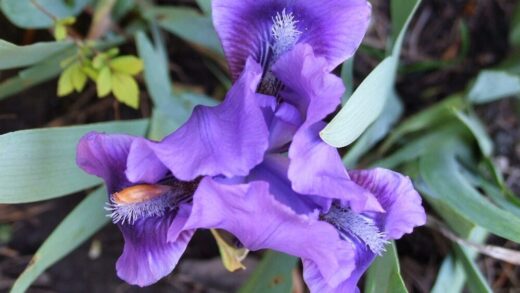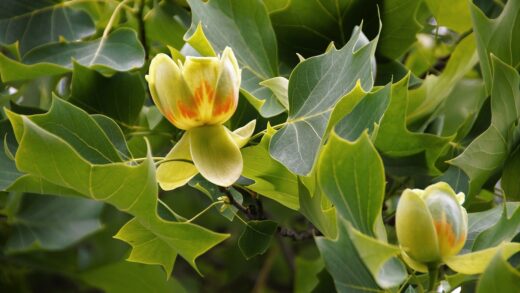The Manchu rose, known scientifically as Rosa xanthina, is one of those plants whose beauty and vitality are inextricably linked with an abundance of sunshine. This stunning ornamental shrub, native to northern China and Korea, also prefers open, sun-drenched areas in its natural habitat. The profuse flowering, during which the bush is covered in its characteristic, brilliant golden-yellow petals, is directly correlated with the quantity and quality of direct sunlight it receives. For this reason, providing the right light conditions is the absolute cornerstone of its successful cultivation, as the plant’s health, vigour, and, most importantly, its flower yield depend primarily on this factor.
Ample sunlight is fundamental to the process of photosynthesis, during which the plant converts light energy into chemical energy, namely the sugars necessary for growth and flowering. Intense, direct sunlight provides the necessary energy for the rose to store sufficient nutrients for bud formation and flower development. In a light-deficient environment, the plant focuses on survival, prioritising vegetative growth over reproduction, or flowering, which can result in fewer or even no blooms at all. Furthermore, an adequate amount of light is also essential for the development of vivid pigmentation in the petals; in a shady location, the colour of the flowers may be paler and less rich.
In horticultural literature, “full sun” generally means at least six to eight hours of unfiltered, direct sunlight per day. For the Manchu rose, this is the ideal amount of light, guaranteeing maximum flower production and healthy development. Morning sunlight is particularly valuable as it quickly dries dew from the leaves, significantly reducing the risk of fungal diseases such as powdery mildew or black spot. Considering the angle of the sun and the changing seasons is also important when selecting the perfect location.
The consequences of insufficient light are conspicuous and multifaceted. The most typical symptom is etiolation, or the stretching of the plant, as the shoots try to reach towards a light source, resulting in a weak, sparse branch structure. The number of flowers drastically decreases, their size becomes smaller, and their colour, as mentioned, becomes paler. Due to its generally weakened state, the plant becomes more susceptible to pests and diseases, as it cannot devote enough energy to maintaining its natural defence mechanisms under inadequate conditions.
The effect of light conditions on growth and habit
Sunlight fundamentally determines not only the flowering but also the entire structure and appearance of the shrub. In ideal, sunny conditions, the Manchu rose develops a dense, compact, well-branched, and robust bush. The stem sections between the leaves, known as internodes, remain short, resulting in lush, dense foliage. This stable and strong structure is not only aesthetically pleasing but also capable of safely supporting the weight of its numerous flowers at the peak of blooming without the branches bending or splaying.
More articles on this topic
In contrast, the morphology of a plant grown in partial shade changes significantly. In such conditions, the Manchu rose adopts a looser, more sprawling, open habit with longer, thinner, and weaker canes. This phenomenon is clearly a survival strategy, by which the plant tries to maximise the use of the limited amount of light captured by its leaves. Although the plant survives, its habit becomes less attractive, giving a more untidy impression and losing its characteristic dense bush form.
The relationship between light and leaf health is also close. Strong sunlight stimulates the formation of a thick, waxy cuticle on the leaves, which provides effective natural protection against water loss from excessive transpiration and against the entry of pathogens. In shadier locations, the leaves are thinner, softer, and more vulnerable, making them more susceptible to various infections. An optimal amount of light also ensures the leaves have a vibrant, deep green colour, which is a sign of healthy chlorophyll production.
Therefore, during practical planting, special attention must be paid to site selection, looking for a part of the garden where the plant will be exposed to unobstructed sunlight for most of the day. Areas under the canopy of large trees, on the north side of buildings, and any other location subject to significant shade during the day should be avoided. It is important to think ahead and consider the final size of the shrub and the growth of surrounding plants to prevent them from shading each other in the future.
Light tolerance and adaptive capabilities
The Manchu rose not only requires but also tolerates strong sunlight and high temperatures exceptionally well. The continental climate of its native region has prepared it to be resilient even on hot summer days, provided its water supply is adequate. Its small, fern-like, dissected foliage can be considered an adaptation, as the smaller leaf surface reduces transpiration and helps to dissipate heat, compared to rose varieties with large leaves. These qualities make it an excellent choice for decorating sunny, hot-located gardens.
More articles on this topic
For newly purchased or container-grown plants, gradual acclimatisation to the new light conditions is crucial. A sudden move from a shaded nursery environment to blazing sun can cause leaf scorch. To avoid this, a process of “hardening off” is recommended, which takes one to two weeks: during this time, the number of hours spent in direct sun should be increased day by day. This method allows the plant time to adapt and strengthen its leaf tissues to withstand the more intense radiation.
Although it needs full sun for optimal development, the question may arise as to how well it tolerates partial shade. It is important to clarify that survival is possible, but exploiting its full flowering and growth potential is not. In a partially shaded location, where the plant receives 4-5 hours of direct sunlight per day, the amount of flowering will be drastically reduced, and the shrub will be more prone to the problems mentioned earlier, such as leggy growth and diseases. Planting it in deep shade is not recommended at all, as the plant would likely just languish there.
It is also worth mentioning the role of reflected light, which can increase the total amount of light the plant receives. Planted next to a light-coloured wall or fence, the rose can also benefit from reflected rays, which can be particularly advantageous in locations that are not perfectly ideal in terms of sun exposure. This extra light can contribute to boosting photosynthesis and richer flowering. However, one must be cautious with surfaces that create extreme “hot spots,” as these concentrated heat and light rays can damage the plant.
Practical advice for proper placement
The most important step for successful cultivation is selecting the right site, which underpins all future care work or makes it redundant. The need for at least six hours of direct sunlight per day must be re-emphasised, so it is worth observing the chosen area for a full day before planting to get an accurate picture of the movement of sun and shade spots. This initial investment of time can prevent the frustration of a poorly performing shrub that later needs transplanting. Good air circulation, which is also typical of open, sunny areas, is a further advantage in preventing diseases.
Sunny spots also tend to dry out faster, so during soil preparation, special attention should be paid to improving its water-retention capacity. Incorporating a generous amount of organic matter, such as mature compost or manure, into the soil helps to keep the root zone moist. Regular and thorough watering, especially in the period following planting and during long, dry, hot spells, is essential for the plant to cope with the heat and light stress of a sunny position.
Pruning is a tool in the gardener’s hands that can be used to optimise light penetration into the interior of the bush. Thinning pruning, carried out after flowering, which involves removing old, senescent, or inward-growing branches, allows sunlight to reach the lower and inner parts. This stimulates the growth of new shoots from the base of the shrub and ensures that in the following years, not just the outer canopy, but the entire bush flowers profusely.
Finally, it is worth considering planting companion plants that have similar light and water requirements. Low-growing perennials or groundcovers can help to keep the root zone cool, reduce weed growth, and function as a living mulch. Excellent companion plants can include lavender, catmint (Nepeta species), or certain drought-tolerant geranium species, which thrive in full sun and beautifully complement the beauty of the Manchu rose without providing excessive competition for light.


















